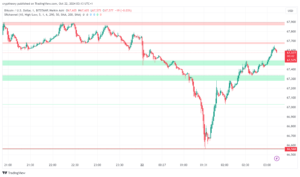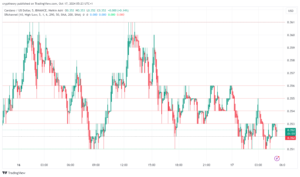BTC analysis – dominance decreases and price continues in sideway structure
2 min readBTC has more or less stagnated over the last 24 hours and price fluctuations have been minimal. So we still don’t know if the harmonic pattern will be confirmed or not. If the pattern is not created, there is also a sideway structure in the game, after which the price could continue to rise. However, we still lack volumes. Will sentiment change?
BTC continues in the last leg of the CD, which represents a potential harmonic pattern. However, a point D must be created for it to arise between the levels of $ 46,000 and $ 44,700. The $ 46,000 level represents a situation where a leg CD would be the same size as leg AB. So we would get a pattern AB = CD within the harmonic. The second $ 44,700 target represents the lowest value to meet the pattern at 88.6% of the XA leg retracement.

The price of BTC does not have to create an harmonic pattern
But what if the price makes the local minimum higher? If the price could be reflected upwards at the current market price, the harmonic would not be created and we would continue to sideway structure until the price could be exceeded first resistance at $ 50,500. However, this scenario would have been earlier bullish, because a sideway structure would be created, which would be a stepping stone for continued growth.

If the price bounces off the support zone, the first resistance the price must overcome is $ 50,500. We will then follow bull target at $ 53,500.






